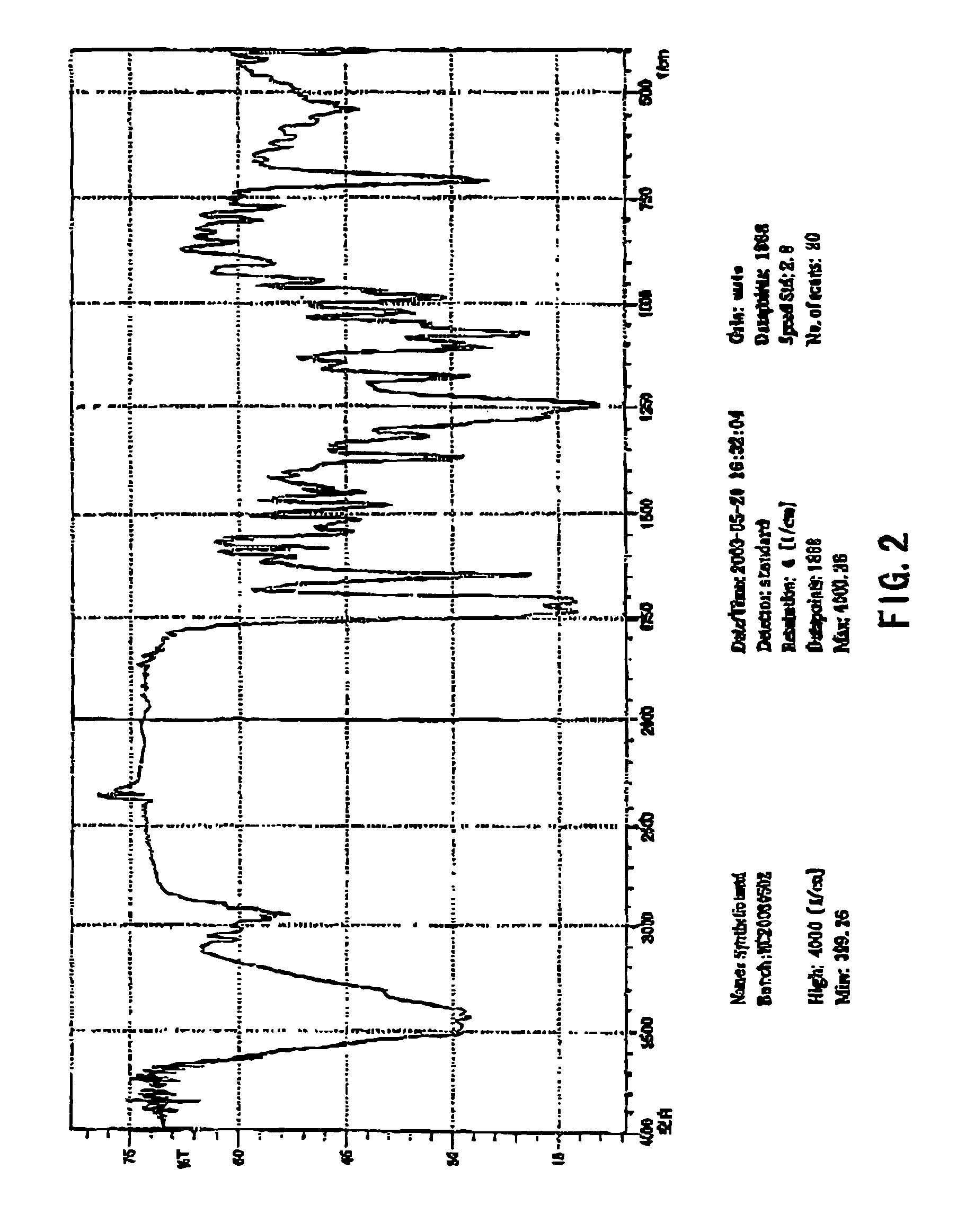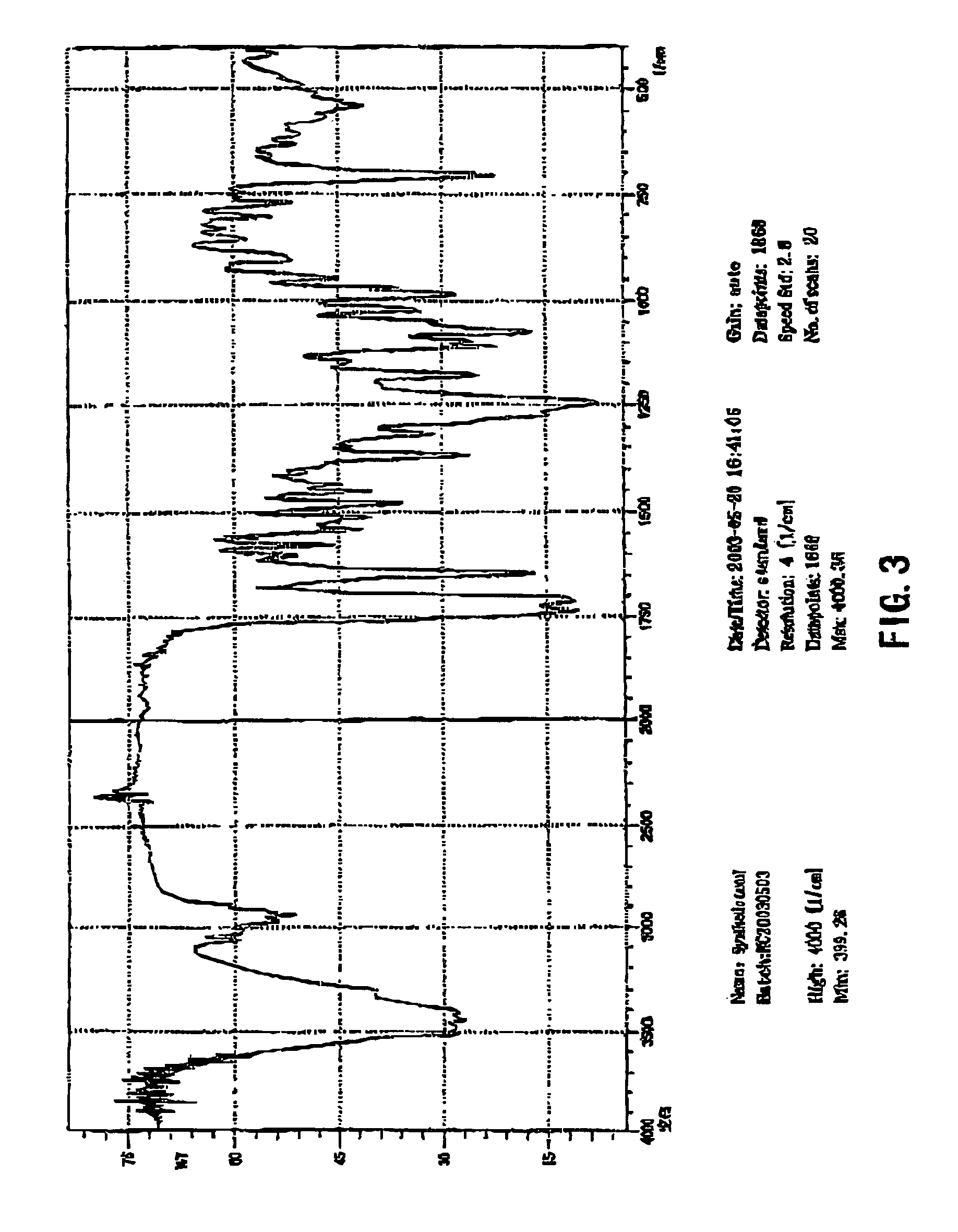Process for the preparation of synthetic taxanes
a technology of synthetic taxanes and process, applied in the field of synthetic taxanes preparation, can solve the problems of reducing the yield of acetyltaxane, the protection effect of said method the yield of acylating c(10) is not quite satisfying,
- Summary
- Abstract
- Description
- Claims
- Application Information
AI Technical Summary
Benefits of technology
Problems solved by technology
Method used
Image
Examples
example 1
Preparation of Paclitaxel from 10-deacetylpaclitaxel
[0034]4.5 g of 10-deacetylpaclitaxel was added to and dissolved in 100 ml of dehydrated tetrahydrofuran. While the solution was being stirred, 120 mg of cerium trichloride was added therein. Stirring was continued for 30 min at room temperature. 7.0 ml of acetic anhydride was slowly dropped into the solution after cerium trichloride was fully dispersed therein. Then stirring was continued for 2 h at room temperature. After it was detected by thin-layer chromatography (TLC) that the reaction was completely carried out, the solution was diluted with 50 ml of water. Acetic acid in the reaction mixtures was completely neutralized with saturated aqueous solution of sodium bicarbonate, and the insoluble substances produced therein were extracted with 250 ml of trichloromethane. After three extractions, the liquid extracts of trichloromethane were combined together, and concentrated to dryness under reduced pressure, yielding 4.7 g of 2′,...
example 2
Preparation of Paclitaxel from 7-(1β-xyloxyl)-10-deacetylpaclitaxel
1) Pretreatment of 7-(1β-xyloxyl)-10-deacetylpaclitaxel Materials
[0036]To a solution of 60 ml of methanol / chloroform (4:1) was added 1.2 g of 7-(1β-xyloxyl)-10-deacetylpaclitaxel, and then 0.7 g of sodium periodate and 5 ml of 0.5 M sulphuric acid were added therein. The mixture was reacted at room temperature for 3 h. Then, the reaction mixture was diluted with 60 ml of water, and extracted three times with 60 ml of chloroform. The organic phase extract was concentrated to dryness, yielding 1.2 g of a colorless solid.
[0037]The solid (1.2 g) was dissolved in 40 ml of methanol. The resulting solution was mixed with 4 ml of 50% acetic acid and 0.5 ml of phenylhydrazine. The mixture was reacted at 50° C. for 2 h. Then, the reaction mixtures was diluted with 40 ml of water, and extracted three times with 40 ml of chloroform. The organic phase extract was concentrated to dryness, yielding 1.23 g of a solid. After silica g...
example 3
Preparation of Paclitaxel from 10-deacetylpaclitaxel
[0054]4.5 g of 10-deacetylpaclitaxel was added to and dissolved in 100 ml of tetrahydrofuran. While the solution was being stirred, 150 mg of lanthanon chloride was added therein. Stirring was continued for 30 min at room temperature. 7.0 ml of acetic anhydride was slowly dropped into the solution after the lanthanon chloride was fully dispersed therein. Then stirring was continued for 2 h at room temperature. After it was detected by thin-layer chromatography (TLC) that the reaction was completely carried out, the solution was diluted with 50 ml of water. Acetic acid in the reaction mixtures was completely neutralized with saturated aqueous solution of sodium bicarbonate, and insoluble substances produced therein were extracted with 250 ml of trichloromethane. After three extractions, the liquid extracts of trichloromethane were combined together, and concentrated to dryness under reduced pressure, yielding 4.74 g of 2′,10-diacety...
PUM
| Property | Measurement | Unit |
|---|---|---|
| temperature | aaaaa | aaaaa |
| temperature | aaaaa | aaaaa |
| organic | aaaaa | aaaaa |
Abstract
Description
Claims
Application Information
 Login to View More
Login to View More - R&D
- Intellectual Property
- Life Sciences
- Materials
- Tech Scout
- Unparalleled Data Quality
- Higher Quality Content
- 60% Fewer Hallucinations
Browse by: Latest US Patents, China's latest patents, Technical Efficacy Thesaurus, Application Domain, Technology Topic, Popular Technical Reports.
© 2025 PatSnap. All rights reserved.Legal|Privacy policy|Modern Slavery Act Transparency Statement|Sitemap|About US| Contact US: help@patsnap.com



